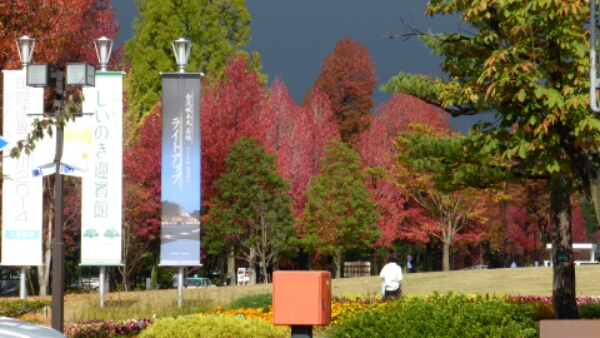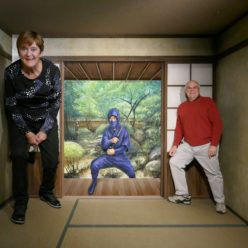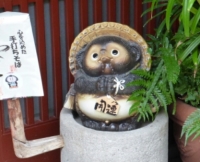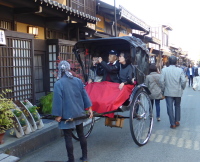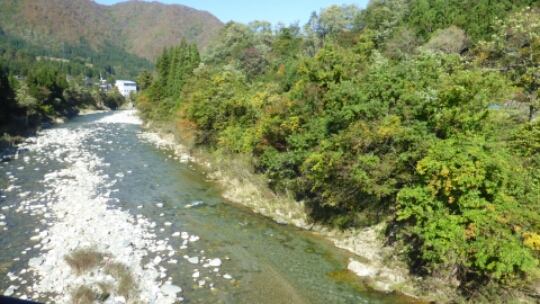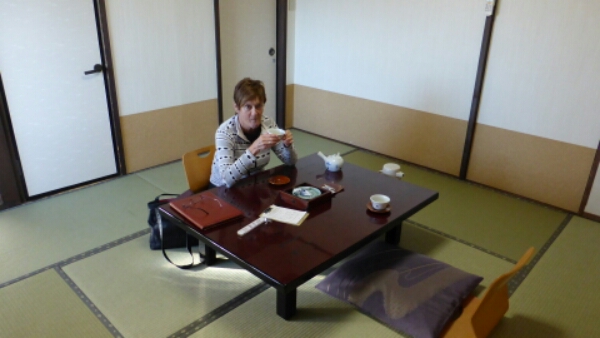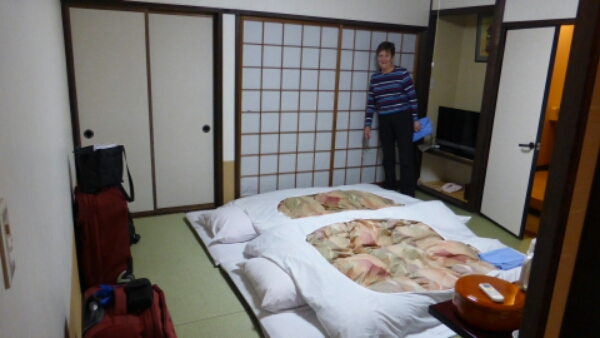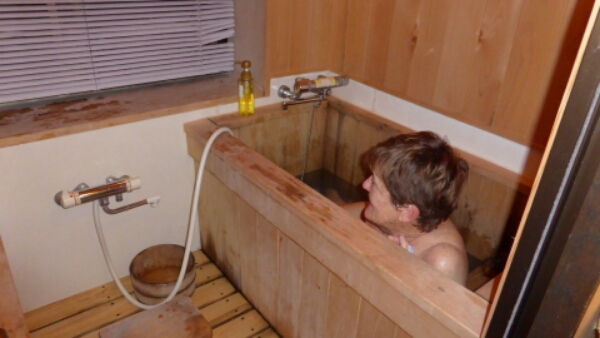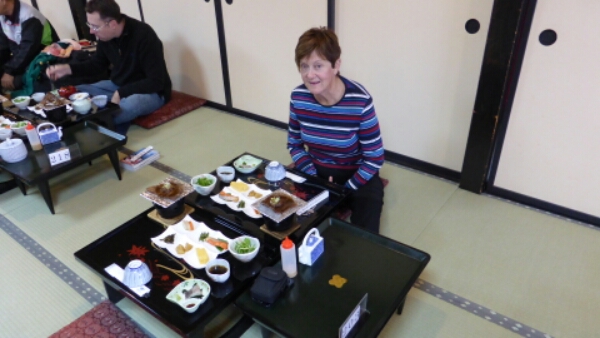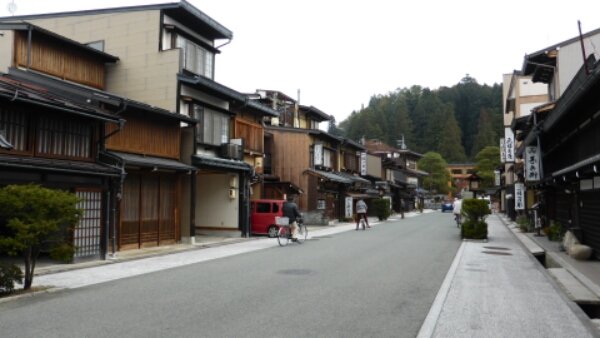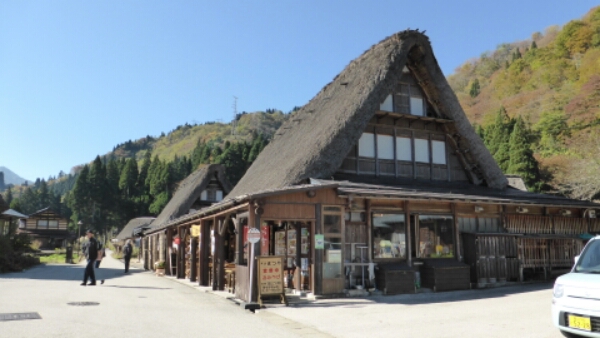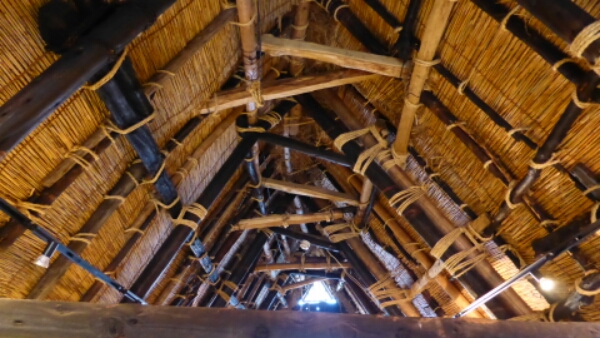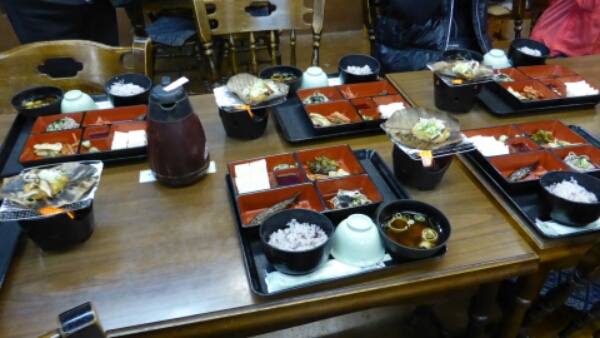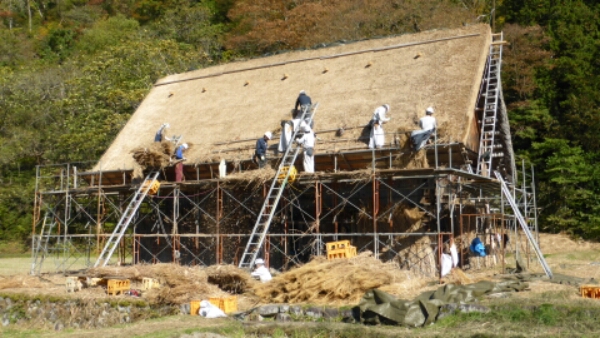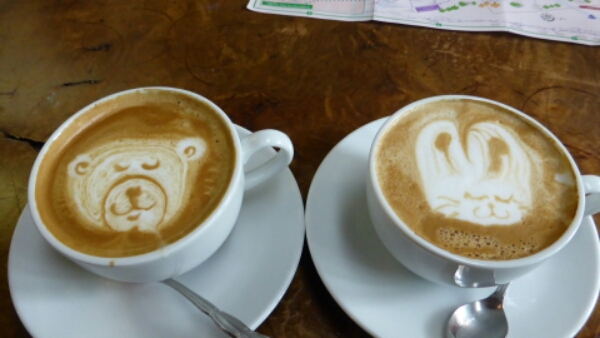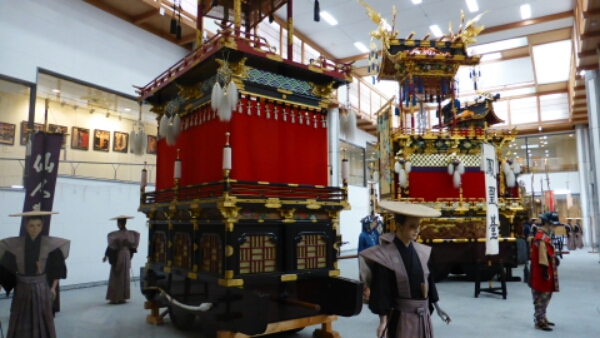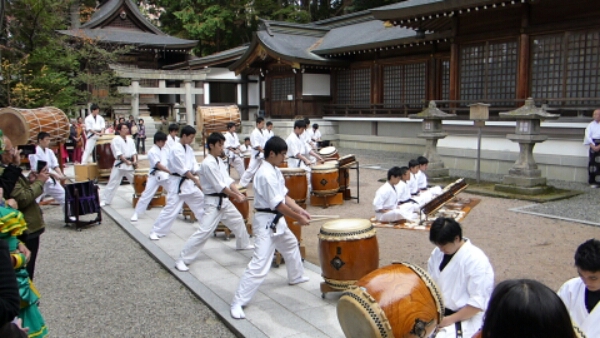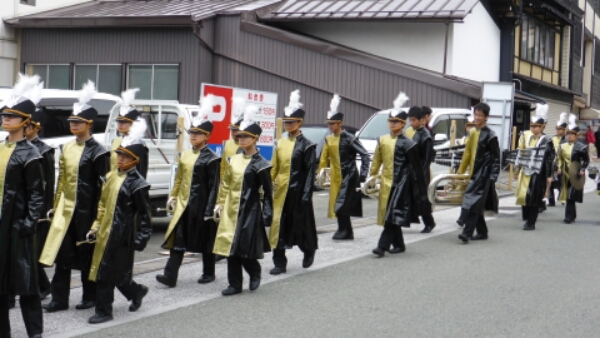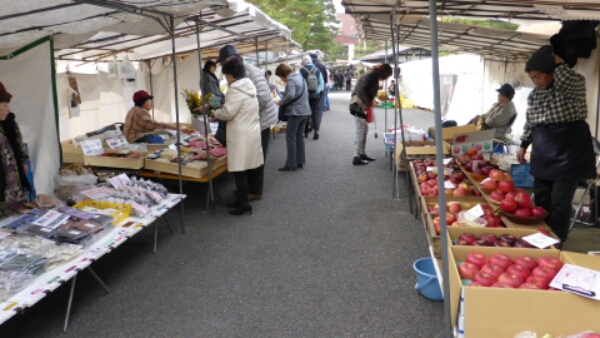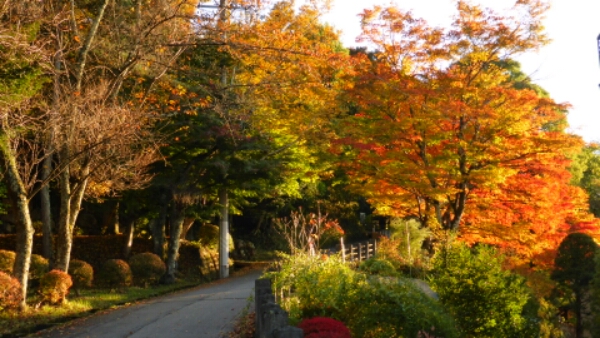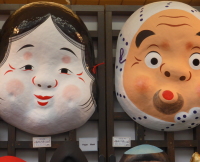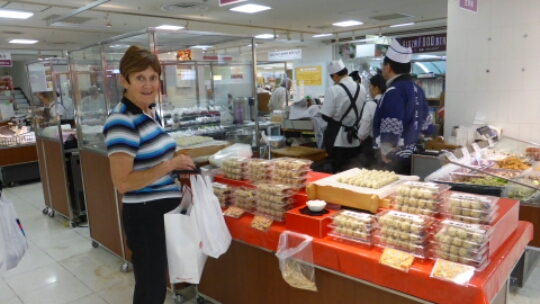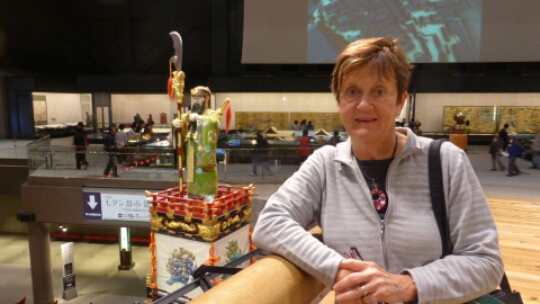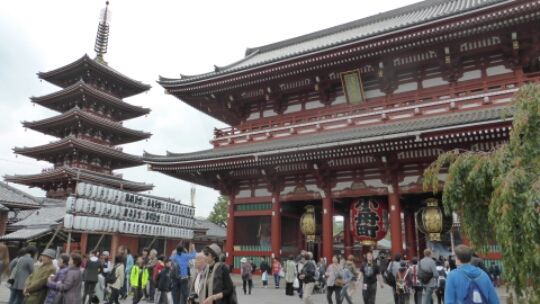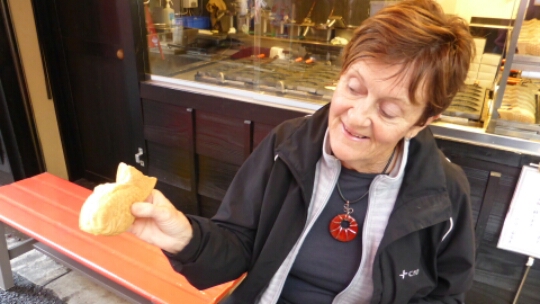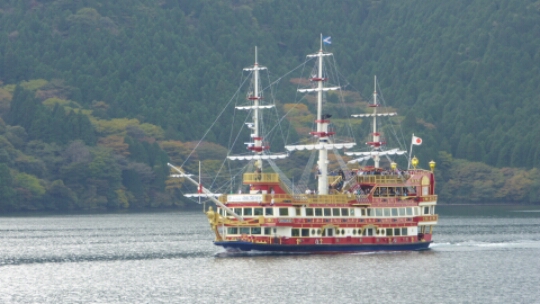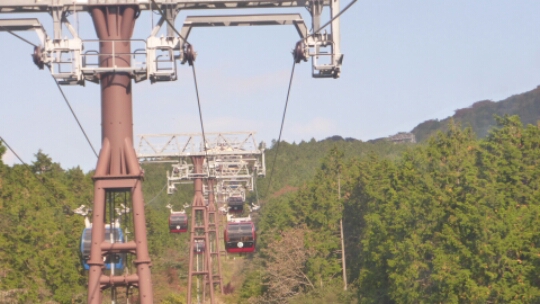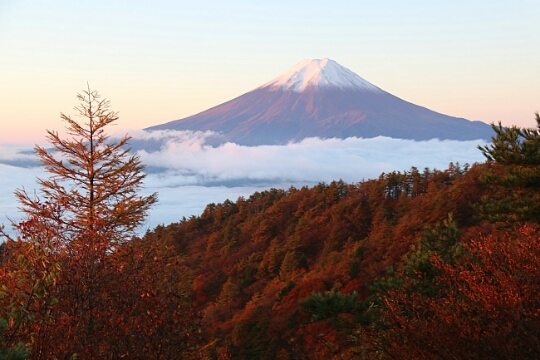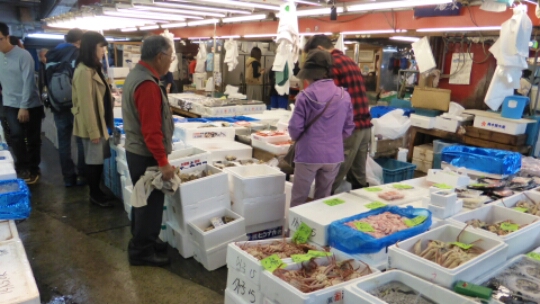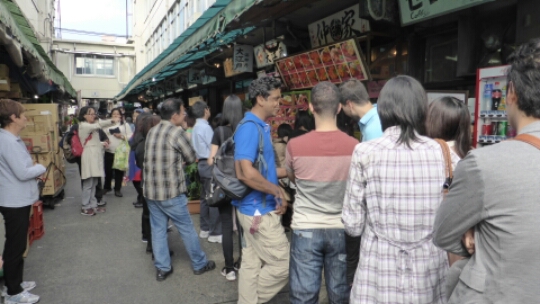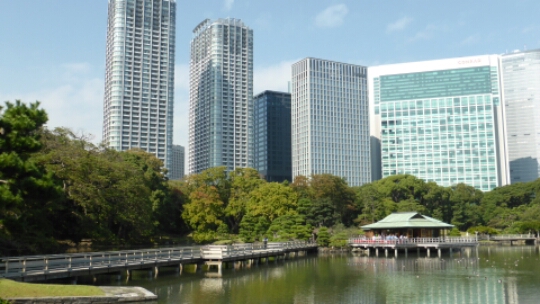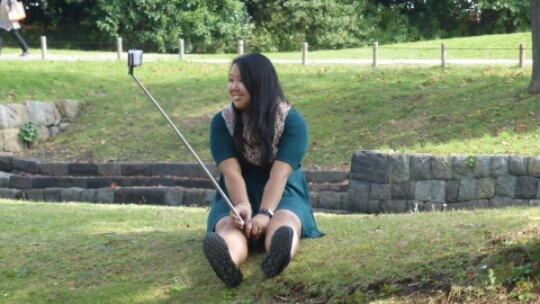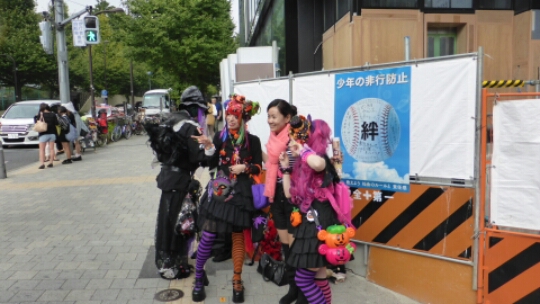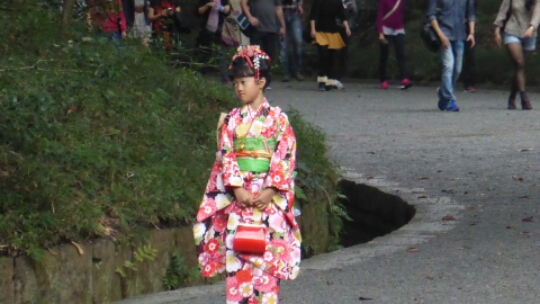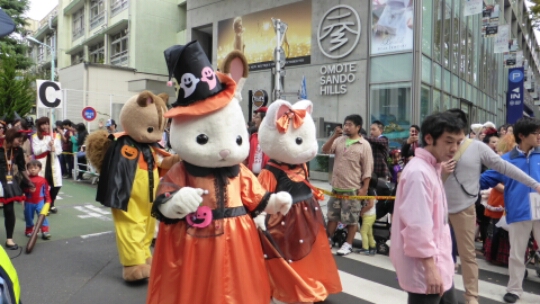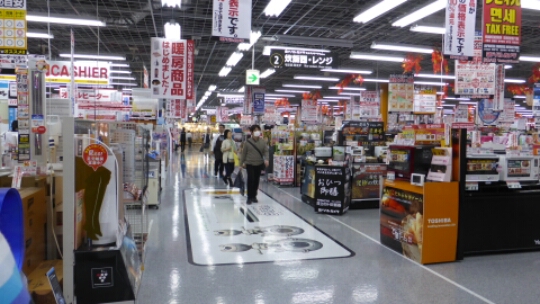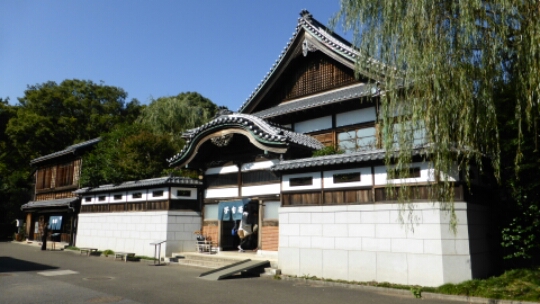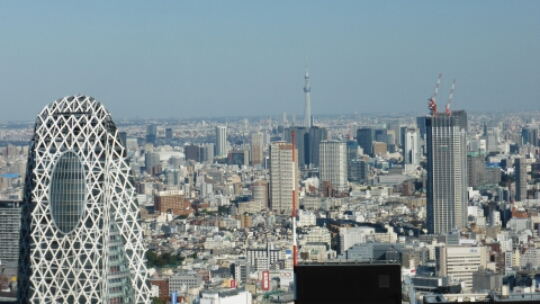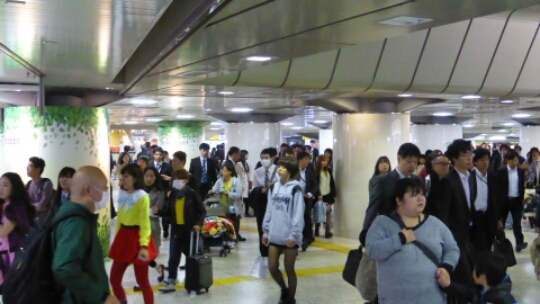Kanazawa, A Contrast To Takayama ….
Once again a very pleasant train trip from Takayama to Kanazawa which took about 2 hours. We wound our way down out of the mountains and on to flat plains as we arrived in Kanazawa. This city is much larger than Takayama and the historic sights tend to be spread all over the city rather than concentrated as they are in Takayama. To get around you have three main options, walk, bicycle or a loop bus which goes around the city to all the major sights. Our first day we elected to walk and went to the Omi-Cho Market, a combined fresh food market with a sprinkling of other vendors selling clothes, bags and other necessities that the locals require. Being a Saturday it was bustling with the Japanese doing their weekend shopping and buying fresh fish and vegetables of all varieties.
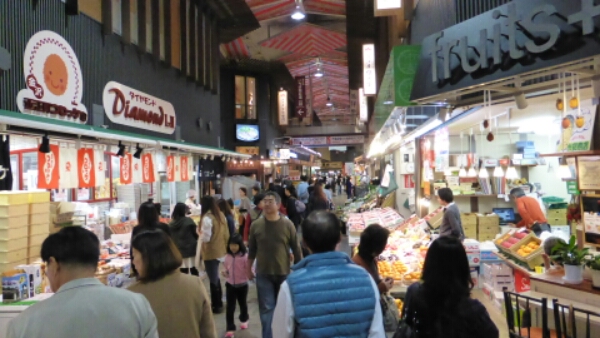
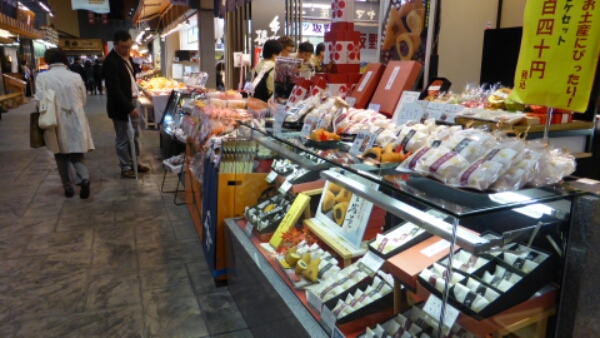
Gardens And Castles Fill In The Day ….
On our second day we decided to rent a bicycle from one of the many “bicycle locking booths”, similar to the tourist bicycles in Melbourne city, the difference being that an adult does not require a helmet in Japan, only a child. After translating the rules and paying by credit card, we set off to explore part of the city and to visit the Kenroku-En Gardens. These gardens cover an area of 11.4 hectares and are well worth a visit. After parking our bikes we wandered the gardens which date back over 300 years and over hundreds of years have been transformed into a magnificent park where visitors can learn about nature and history right in the downtown area of Kanazawa. There is so much to see including lakes and ponds, waterfalls, tea houses, traditional bridges over winding peaceful streams, and of course a selection of over 8,200 trees and 160 species of flowers. It was just pleasant and peaceful to walk around until the dark clouds opened up and it poured with rain.
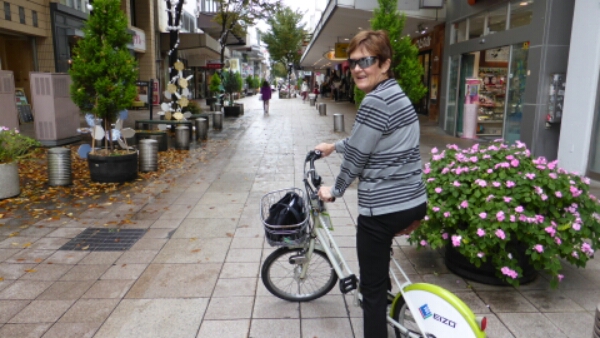
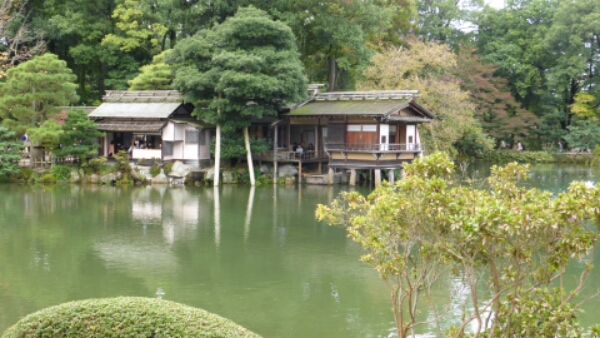
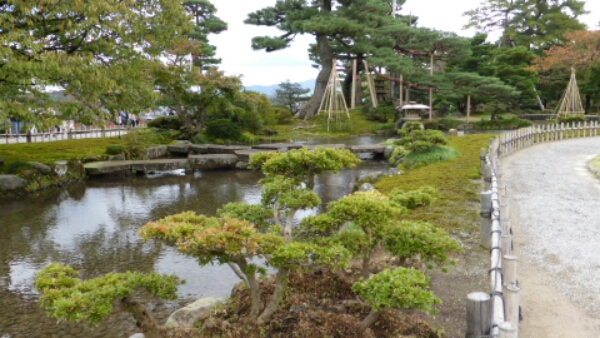
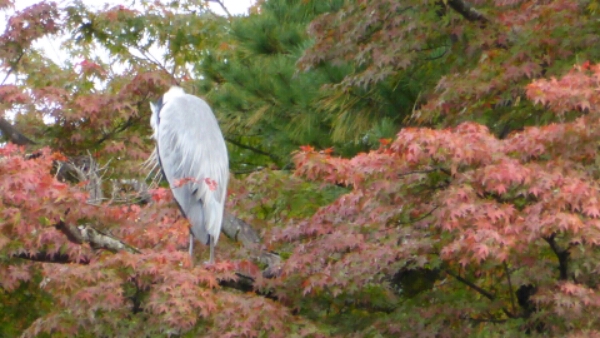
Not Unlike Melbourne ….
The saying in Kanazawa is “you can forget your boxed lunch but dont forget your umbrella”. We fortunately had not forgotten our umbrellas and scurried undercover to enjoy a soba noodle lunch before venturing on to visit the castle opposite.
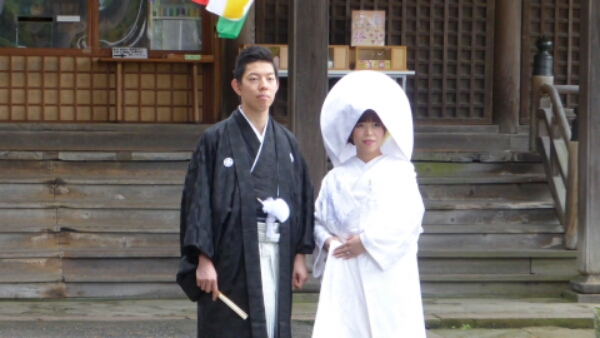
Still Under Construction ….
The Kanazawa Castle construction began more than 400 years ago but has had many fires over time. The castle is being restored to its original form using the traditional construction methods. The structure consists of a framework of Japanese cypress pillars and American white cedar beams with pine logs used for the ceiling beams all jointed with resistant mud walls and strengthened with braces. It is the largest wooden castle in Japan and the buildings are expected to last 200-250 years. It is being so perfectly restored. The rain continued so we decided to abandon our bike ride and catch the Loop Bus back home.
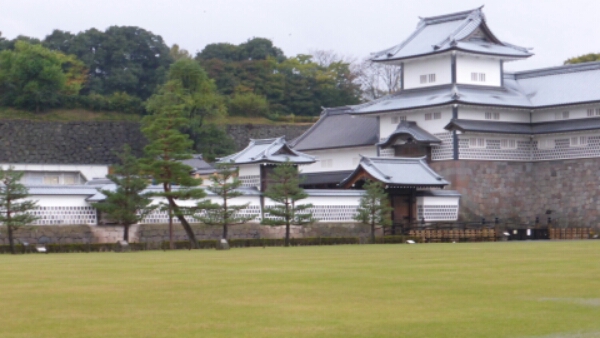
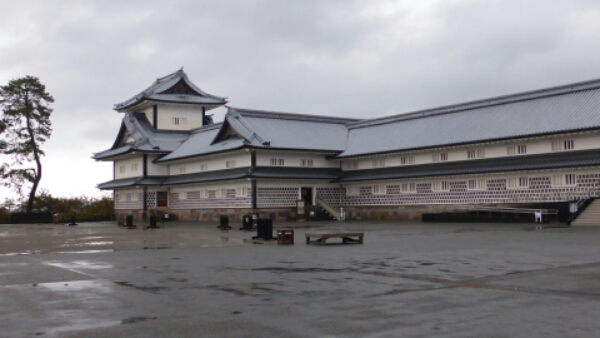
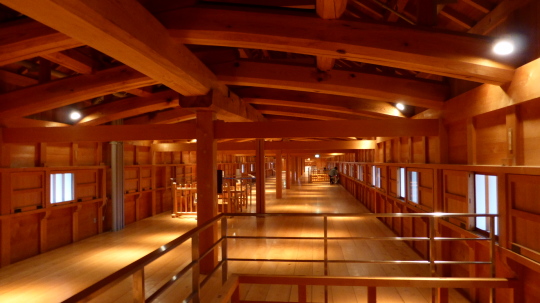
I Think We Will Go Loopy ….
On our last day we decided to buy an all day Loop Bus pass for 500 yen (approx $5.50) and visit the other tourist areas of Kanazawa. Again, we didn’t forget our umbrellas and our first stop was Higashi Chaya District. This area is full of artisan shops where you can experience different works of art including ceramics, gold leaf, lacquer art, fabric dying and silk work. Very expensive shops are set amongst the traditional houses of the feudal period.
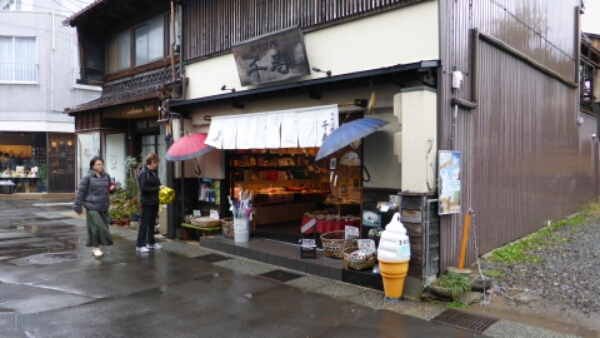
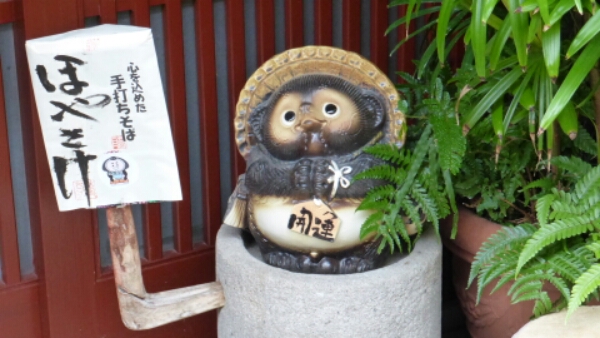
Back On The Bus ….
It was then back on the Loop Bus for our next stop to soak up more of the city of Kanazawa. We walked up little alleyways, down shopping boulevards and covered arcades, indulging in coffee and cake under a marquee at a cake exhibition in the pouring rain and then back on the bus to the Nishi Chaya and Termachi Temple area to see temples and again traditional houses along a cobbled street.
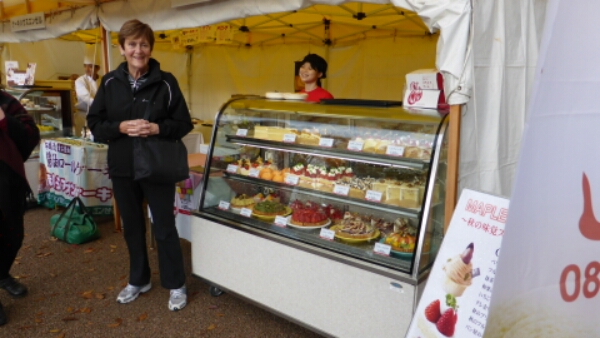
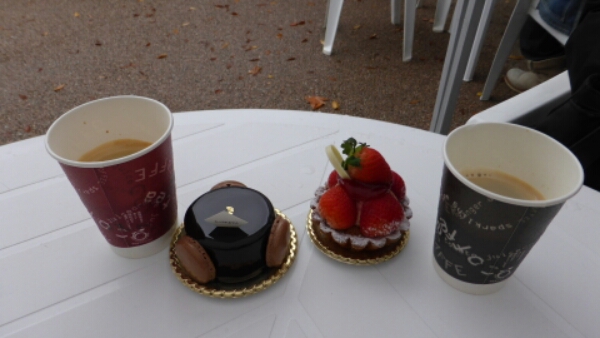
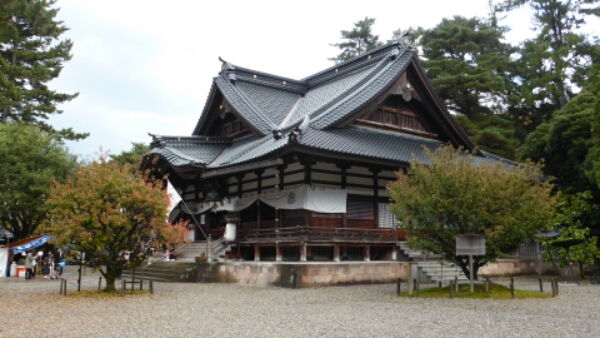
By the end of our final day in Kanazawa we were ready to continue onto Osaka, our next adventure, leaving the next morning at 9.00am.
